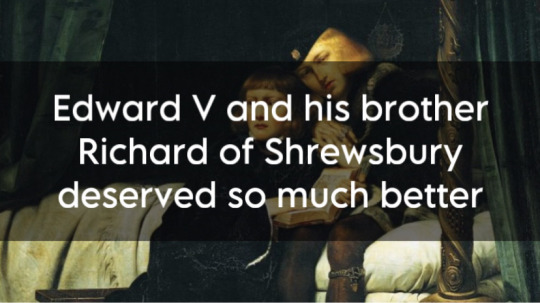#Richard of Shrewsbury
Explore tagged Tumblr posts
Text
Time Travel Question : Murder and Disappearance Edition I
Given that Judge Crater, Roanoke, and the Dyatlov Pass Incident are credibly solved, though not 100% provable, I'm leaving them out in favor of things ,ore mysterious. I almost left out Amelia Earhart, but the evidence there is sketchier.
Some people were a little confused. Edward V and Richard of Shrewsbury are the Princes in the Tower.
#Time Travel#Famous Murders#Jack the Ripper#La Bete du Gevaudan#Gandillon Family#Werewolves#William Rufus#King William II#Edward V#Richard of Shrewsbury#French History#English History#Early Modern Europe#Victorian England#Lord Darnley#Mary Queen of Scots#Scottish History#Amy Robsart#Lord Dudley#The Sodder Children#The Somerton Man#Australian History#Prime Minister Harold Holt#Elizabeth Short#The Black Dahlia
516 notes
·
View notes
Note
the two skeletons may reveal the death of the Princes? 👀
I'm not super familiar with this topic, tbh. From what I can understand, it's possible, but it's equally possible that DNA testing may not actually prove or reveal anything regarding the Princes.
Context: In 1674, workmen found two skeletons in a wooden box in the Tower of London, where they had been buried 10 feet under the staircase leading to the chapel of the White Tower. Charles II ordered the bones to be reinterred in Westminster Abbey in 1678, and a Latin inscription written at that time translates to: "Here lie the relics of Edward V, King of England, and Richard, Duke of York".
In 1933, the bones were examined by Lawrence Tanner, William Wright and George Northcroft, who concluded that they belonged to two children around the correct ages for the Princes, and that one skull showed evidence of death by suffocation. No further scientific examination was conducted, although many believe that re-examination with improved techniques and DNA sampling could provide a more accurate analysis. However, to disinter a body from the Abbey, permission has to be granted from the reigning monarch (ew), which has not been granted as of yet.
Many members of the R3 Society hope that the bones will be proved not to be the Princes, because they feel like it will vindicate Richard due to the absence of explicit, tangible evidence of their deaths. Those who believe Richard III was guilty (he was) believe that if the bodies were the Princes, it would prove they were murdered. If examinations reveal that were the Princes, and reveal manner of death was violent, then yes, the latter seems reasonable. But we don’t know what will will show up in the results - if they are ever allowed - and it's entirely possible it won't matter to the current case.
To quote @seethemflying from this post:
“Most scholars agree it will not actually prove anything at all. If the bones are the princes, it just proves that they died in the Tower, not who murdered them. If the bones are not the princes, it just means these bones belong to someone else. The Tower of London is old, and was built on part of Londinium's Roman wall. Pre-medieval and even Roman human remains have been found on the site before, it wouldn't be a surprise if these bones dated to any point before the 17th century […] Whether the bones are or are not the princes can therefore do little to answer the central questions about who killed these little boys.”
For example, there are a few sources - both contemporary and post-contemporary - that suggest water may be involved in the Princes' "disappearance" (murder). We don't know the exact circumstances, but if the Princes were disposed off in such a manner, we cannot expect to ever find their bodies.
Ultimately, regardless of the identity of the two skeletons, the Princes were almost definitely were murdered, and Richard III was almost definitely the one who murdered them. We do not know it "for sure", the same way we do not know "for sure" if Arthur of Brittany, Edward II, Richard II and Henry VI were murdered (and how), but all of them almost definitely were and it’s simply disingenuous to pretend otherwise. It’s equally disingenuous to act as though all the above-mentioned cases were clear-cut examples of murder while the case of the Princes is somehow a more Complex and Confusing one which you have to choose your words more carefully over when it's....really, really not (see: the matter-of-fact way they talk about John and Arthur VS Richard and the Princes). Either you should analyze all these cases with the same level of assertion/uncertainty, or don't analyze them at all.
Also, contrary to the claims of Ricardians, who believe that nobody accused Richard III until the Tudors, there are a range of independent contemporary sources who firmly believed he killed his nephews. It also makes zero sense for Elizabeth Woodville, Elizabeth of York and Edward IV's supporters, who were the ones to raise Henry Tudor as an active claimant to challenge Richard III in the first place, to endorse Henry in any way if they thought that Edward V or Richwrd of Shrewsbury might still be alive. The fact that they did can only mean that they knew/believed that the Princes were dead (though I think there was considerable ambiguity on the exact circumstances behind those deaths). It's simply illogical to pretend otherwise.
#ask#sorry but I'm really fed up with how much people have to walk on eggshells when discussing the Princes#(and Edward II as well tho I don't think it's comparatively as widespread in popular history as that of the Princes)#(also the way a few blogs/historians are now trying to argue Henry VI actually died of grief...please Stop)#it's really zero steps forward 10 steps back 🤡#we don't explicitly tangibly know if they were murdered. we don't explicitly tangibly know 90% of things in history#but you can still use your brains and come to the only logical conclusion possible which is the fact that they undoubtedly were#princes in the tower#english history#edward v#richard of Shrewsbury
25 notes
·
View notes
Text
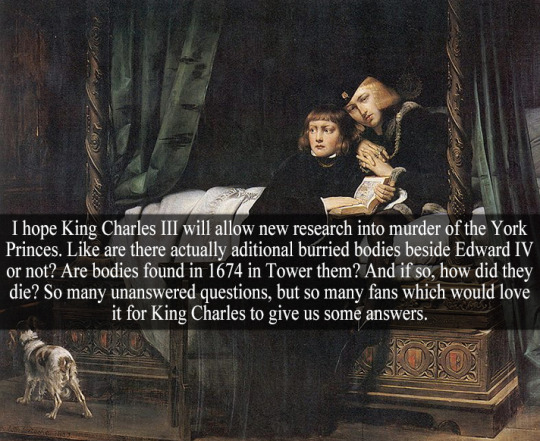
“I hope King Charles III will allow new research into murder of the York Princes. Like are there actually aditional burried bodies beside Edward IV or not? Are bodies found in 1674 in Tower them? And if so, how did they die? So many unanswered questions, but so many fans which would love it for King Charles to give us some answers.” - Submitted by Anonymous
20 notes
·
View notes
Note
A big ask I know. But what is some evidence that the documentary conveniently ignored to push their survival narrative?
Evidence of the death of the princes is much less conclusive, because the only contemporary evidence we have are several chroniclers abroad and in England & Wales stating that the princes were murdered or were believed to have been murdered. There is more evidence that Lambert Simnel and Perkin Warbeck were impostors, though. From the top of my head: the Sétubal testimonies confessing Warbeck was not Richard of Shrewsbury, Maximilian I's own 1488 admission to Henry VII claiming he was duped by Margaret of York into backing an impostor (only to do the same again four years later), Perkin Warbeck's letter asking his mother in Tournai for money to pay his expenses in prison in England, and comments by foreign ambassadors who understood the situation was simply international politics.
For more precise scrutinising of the evidence on Lambert Simnel and Perkin Warbeck I really recommend Nathen Amin's Henry VII and the Tudor Pretenders. He never explicitly says his opinion but the evidence he presents clearly points to a logical conclusion.
Now, one truly has to ask why Langley & co decided to discard their earlier Da Vinci code theory that Edward V lived out his days as John Evans in a small Devon village and instead chose to go with the by now often beaten theory that Lambert Simnel was Edward V. It doesn't make sense because those symbols/glass panels were the only genuine new evidence they found (even if imo it's not conclusive to Edward V's survival). The rest was already known since the 1950s.
17 notes
·
View notes
Text
Edward V chilling in Essex after Uncle Dickie’s failed assassination attempt
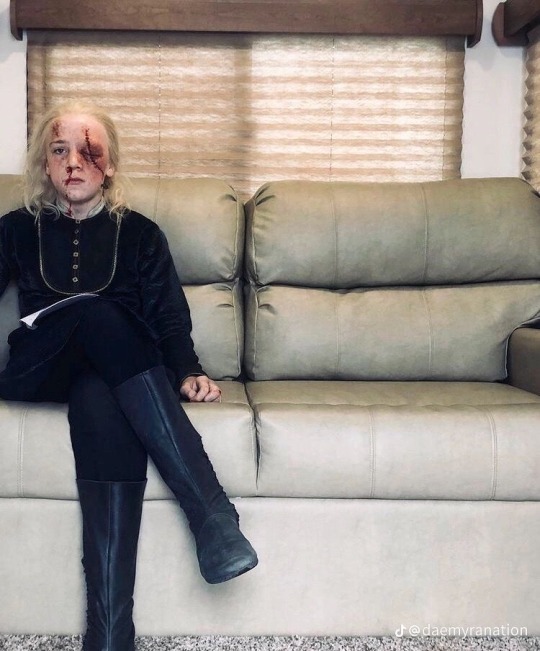
5 notes
·
View notes
Photo
@fairytaleromancing -
Period piece; the white princess:
He's Richard of Shrewsbury!

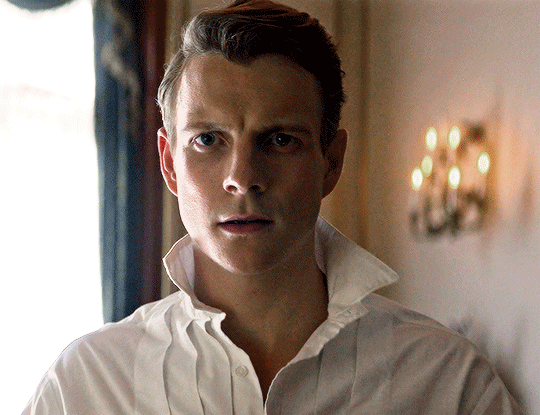

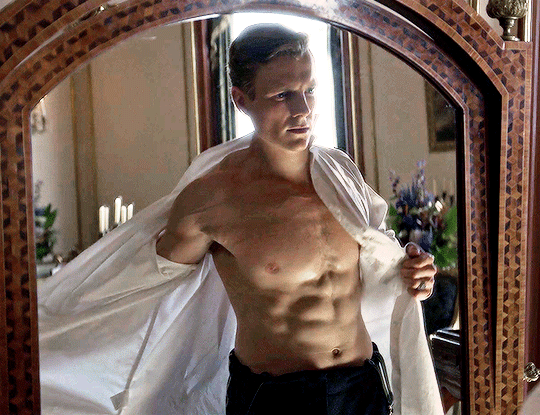

#softly but with feeling #what the f
#excuse me but how DARE#he really do need to appear in a period drama or a fairytale movie as a prince OR ELSE I'LL LOSE MY MIND#shadow and bone#< prev tags#richard of shrewsbury#perkin warbeck#my son
3K notes
·
View notes
Text

Updated.
#edward v#richard of shrewsbury#edward iii#richard ii#henry iv#henry v#henry vi#edward iv#richard iii#henry vii#henry viii#elizabeth i#edward vi
0 notes
Text
THE MYSTERY OF HENRY GREY, DUKE OF SUFFOLK'S HEAD
Henry Grey was the father of the ill-fated Lady Jane Grey, the Nine Days’ Queen. A great grandson of Elizabeth Woodville, through her son , Thomas, from her first marriage to Sir John Grey, he married Frances Brandon, daughter Henry VIII’s sister, Mary, so their children, three girls named Jane, Katherine and Mary, had a claim to the throne. Henry Grey was prominent in Henry VIII’s court, taking…

View On WordPress
#"Princes"#Admiral Thomas Seymour#Anne Boleyn#Anne Mowbray#coronations#Edward VI#executions#Henry Grey Duke of Suffolk#Jane#John Dudley Duke of Northumberland#Lady Elizabeth Grey#Lady Elizabeth Talbot#Lady Frances Brandon#Lady Katherine Grey#Lady Mary Grey#lords protector#Minories#mouat#National Portrait Gallery#Poor Clare&039;s convent#rebellions#Richard of Shrewsbury#severed heads#Sir George Scharf#Sir Thomas Wyatt#st botolph aldgate
0 notes
Note
wasn't there a theory a while ago that one of the princes (richard i think) became a brick layer because this particular worker was recorded as speaking latin? and so he was too educated for his social rank?
I never heard of it, sorry. Nonetheless, I don't buy that theory.
0 notes
Text
New post about the Princes in the Tower!
Check it out! Or don't. I can't tell you what to do.
0 notes
Text
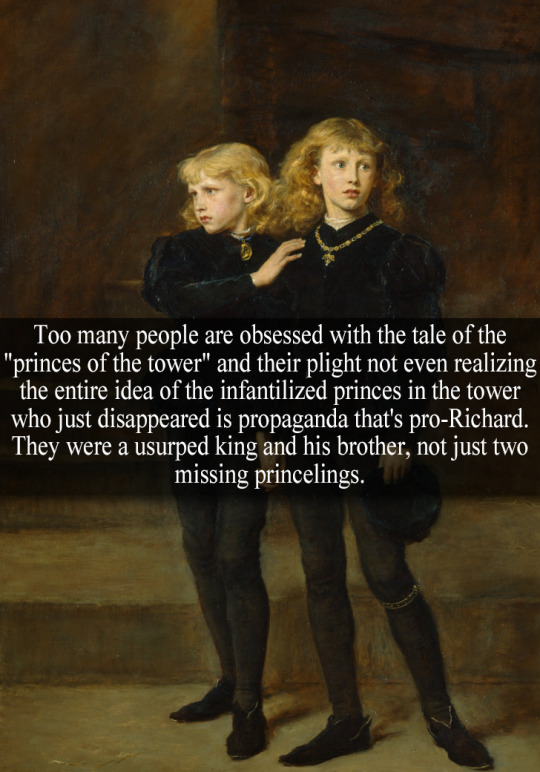
“too many people are obsessed with the tale of the "princes of the tower" and their plight not even realizing the entire idea of the infantilized princes in the tower who just disappeared is propaganda that's pro-Richard. They were a usurped king and his brother, not just two missing princelings.” - Submitted by Anonymous
13 notes
·
View notes
Text
Funny that you say that, because Anne actually mocks the crinoline gowns of the 1860s in this scene:
Anne is so strongly out of place in a world filled with crinoline-clad women, their skirts so wide that they cannot walk side-by-side in the street, that she feels a sense of unique smugness. Her skirts may be long, heavy, and made of expensive fabrics, but they are warm and cover her from head to toe. Unlike them, with their fashionable extravagant silhouettes.
I don't know how to feel about the White Princess, because they stick Cathy Gordon in this:

What is it with Phillipa Gregoy and putting her female characters with their hair down? Especially since Elizabeth of York's hair is up. Though I will admit watching this show and seeing Henry Tudor be like to Elizabeth - "Am I a bad man?" And Richard of Shrewsbury is right there like:

Uh, yes. I have way too many thoughts about the white princess, namely the fact that the way they portray Elizabeth of York is just... She's bad. So awful. I did love Teddy and Maggie. Although having Cecily Neville meet Nikolai Richard of Shrewsbury, is inaccurate, because she wouldn't be in Burgundy, nor was she alive for his unsuccessful invasion. He actually attempted a failed landing two years earlier AND bolted from Henry Tudor's army in 1497.

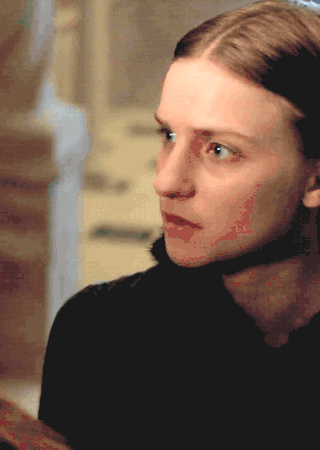
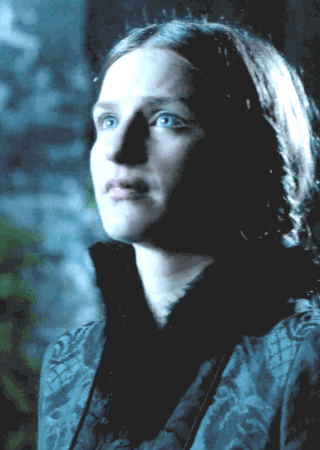

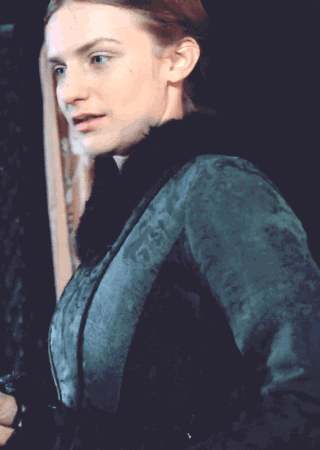
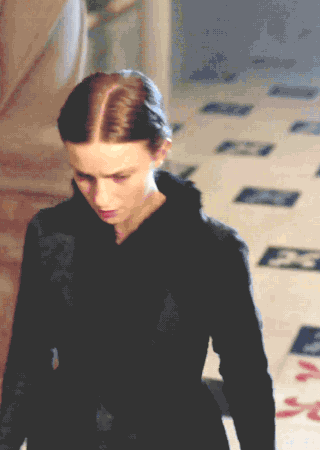
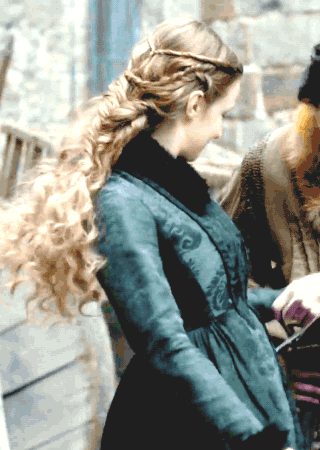

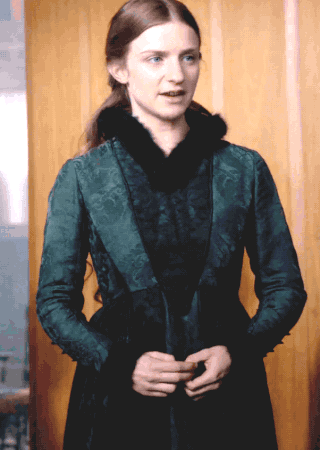
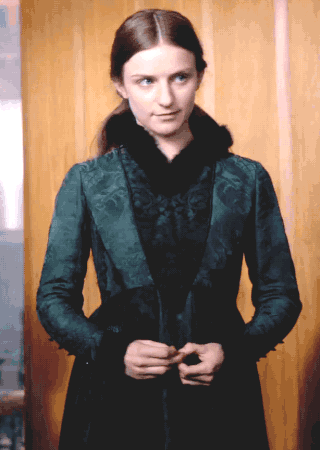


(Almost) Every Costume Per Episode + Anne Neville's darkl green gown with black fur trim in 1x02,3,4,6
95 notes
·
View notes
Text


Richard of Shrewsbury, Duke of York + Two young princes: Edward V and his brother Richard of Shrewsbury, 1st Duke of York
HASTINGS On what occasion God He knows, not I, The Queen your mother and your brother York Have taken sanctuary. The tender prince Would fain have come with me to meet your Grace, But by his mother was perforce withheld. BUCKINGHAM Fie, what an indirect and peevish course Is this of hers!—Lord Cardinal, will your Grace Persuade the Queen to send the Duke of York Unto his princely brother presently?— If she deny, Lord Hastings, go with him, And from her jealous arms pluck him perforce. —William Shakespeare, Richard III [3.1]
0 notes
Text
A RED ROSE FOR CHELSEA
After he became King, Richard III leased the Manor of Chelsea to the Dowager Duchess of Norfolk for a red rose given each Midsummer. The Dowager Duchess was Elizabeth Talbot, the sister of Eleanor Talbot, Edward IV‘s secret wife. Elizabeth (and Eleanor) were also full 1st cousins to Richard’s wife, Anne Neville. Elizabeth, who had not been treated particularly well by Edward with his ‘land grab’…

View On WordPress
#Anne Montgomery#Anne Mowbray#bigamy#Cambridge#Chelsea#Corpus Christi#Edward IV#Elizabeth Wydeville#Lady Eleanor Talbot#Lady Elizabeth Talbot#London#Minoresses#pre-contract#Reginald Bray#Richard of Shrewsbury
1 note
·
View note
Note

So what's the new evidence anyway?
Summing up the 'new evidence' about the Princes in the Tower
1. They found Maximilian of Austria's receipt (for the payment of pikes) calling Lambert Simnel Edward IV's son instead of Edward IV's nephew (Warwick) so that would somehow prove Edward V survived. They try to convince us into trusting the word of a ruler who by his own admission in 1488 claimed he was duped by his mother-in-law into supporting a fake prince and then four years later did exactly the same thing again.

2. They also ask us to believe in a survival account provided by Perkin Warbeck because it's so detailed it's 'compelling', but they won't accept the same from Thomas More, for example, regardless of how detailed or how many names are provided in More's account (the good old picking and choosing).
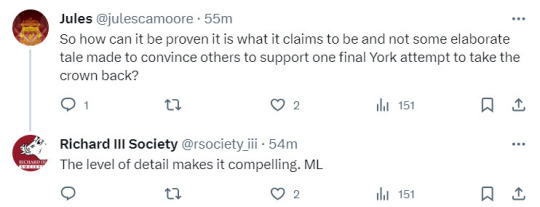
3. They present a 'Richard' signature which is supposedly such a bold statement in itself it could only be the real name of the person who wrote it, as if the man pretending to be Richard of Shrewsbury would ever sign his documents with any other name.
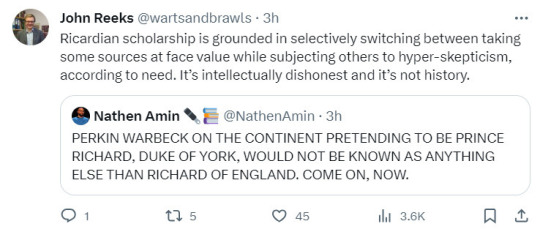
These are truly abysmally poor arguments. It's like John Reeks said: this is not history, this is a PR campaign dashed with a side of intellectual dishonesty. If your argument can't be supported by real solid evidence it's not history, it's wishful thinking.
#Edward V#Richard of Shrewsbury#Lambert Simnel#Perkin Warbeck#Maximilian I Holy Roman Emperor#Matthew Lewis#Leanda de Lisle#John Reeks
114 notes
·
View notes
